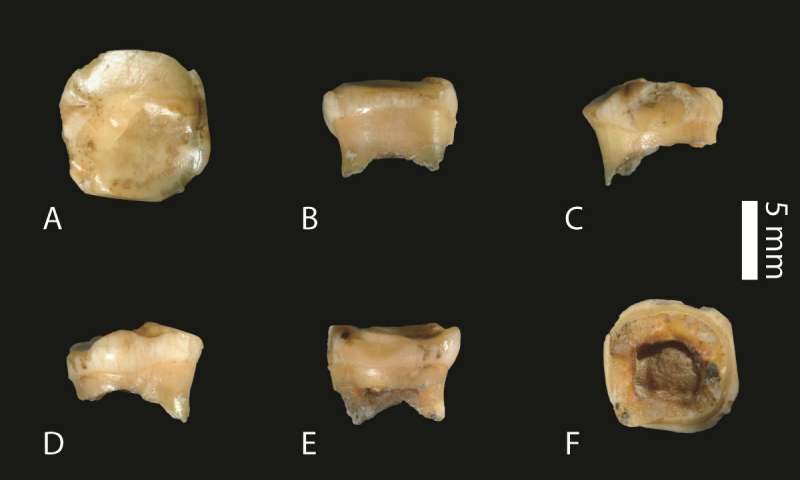
© Slon et al. Sci. Adv. 2017; 3: e1700186Photographs of the Denisova 2 lower second molar in (A) occlusal, (B) mesial, (C) buccal, (D) lingual, (E) distal, and (F) apical views. Scientists estimate the molar found in the Denisova Cave in Siberia is older than previously studied Denisovan fossils.
DNA in a fossil from a young girl has revealed that a mysterious extinct human lineage occupied the middle of Asia longer than previously thought, allowing more potential interbreeding with Neanderthals, a new study finds.
Although modern humans are the only surviving human lineage, other hominins — which include modern humans, extinct human species and their immediate ancestors — once lived on Earth. These included Neanderthals, the closest extinct relatives of modern humans, as well as the Denisovans, who lived across a region that might have stretched from Siberia to Southeast Asia.
In 2010, researchers analyzed DNA from fossils to reveal the existence of the Denisovans, suggesting the lineage shared a common ancestor with Neanderthals. However, the Denisovans were nearly as genetically distinct from Neanderthals as Neanderthals were from modern humans, with the ancestors of Denisovans and Neanderthals splitting about 190,000 to 470,000 years ago.


Comment: Funny how the machinery of death - however 'humane' - usually falls into the hands of those who most want to dole out death.